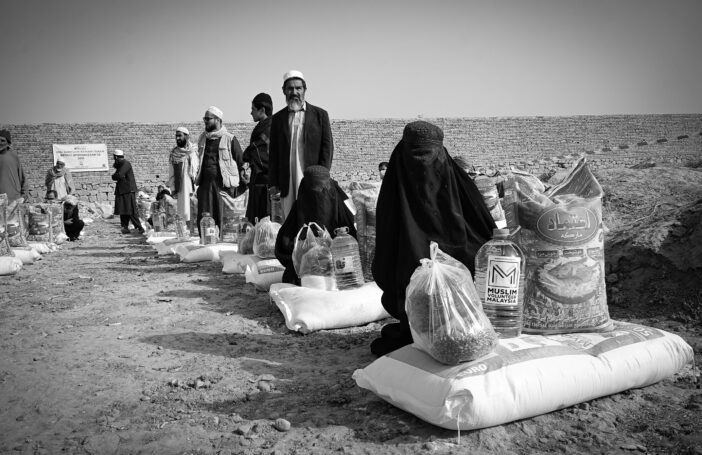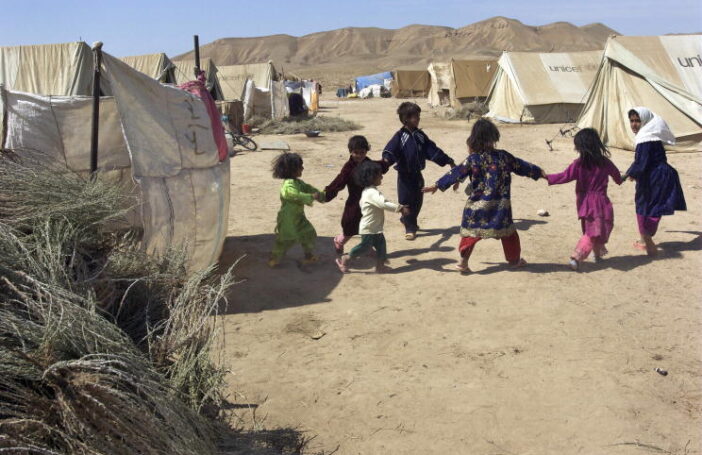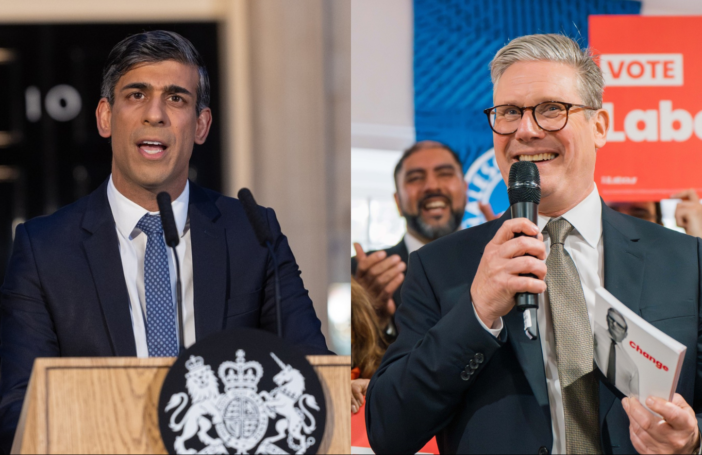The Commission on State Fragility, Growth and Development, chaired by David Cameron and including such luminaries as Paul Collier and Donald Kaberuka, released its report a few weeks ago. Overall, we think it’s a helpful contribution that adds the weight of some big names to a growing consensus about what has gone wrong and what could be done better when it comes to helping countries emerge from violent conflict.
The easiest criticism is that the authors don’t live up to their own stated ambition: while claiming to be charting new ground and disparaging much of what has gone before, the report echoes existing work, while not really engaging with — or even acknowledging — some of the most important ideas and publications in the broader academic and practitioner discourses.
Sensible messages
We should all welcome the full-throated repudiation of the liberal state-building model of the 2000s in its most simplistic and hubristic forms. From the outset, the authors frame the escape from conflict as a political process driven by the emergence of institutions capable of solving context-specific collective action problems. They frankly acknowledge the limited ability of outsiders to effect institutional outcomes and social change in a deliberate manner. They warn against seeking to resolve fragility through transplanting OECD-style institutions, quickly pursuing multi-party elections, or driving constitutional reform processes. They rightly argue that such institutional measures should follow and consolidate more organic and legitimate power-sharing and accountability arrangements forged by national actors, rather than initiate them.
The report’s emphasis on the importance of critical junctures and the potential use of these moments to signal positive change and project public authority is welcome. The effort to combine a political framework containing insights from psychology (around the importance of a common purpose and shared identity), with a sensible framework for economic development has unusual breadth, at least when compared to the mainstream economic literature. Messages on the need for realism, prioritisation, and a long-term perspective are music to our ears.
Welcome to the fold, Professor Sirs
But how much of this is new? A voluminous literature over the course of more than a decade criticises the externally-driven liberal statebuilding model. A decades-old political economy and comparative politics literature describes historical processes of state formation, covering experiences from Europe to East Asia, and leaves little room for the conceits of institutional implantation. Over the last decade, a virtual consensus has formed in economics and development praxis that political drivers shape development outcomes and that effective institutional and policy reform requires understanding a country’s formal and informal arrangements for the distribution of power and resources. The target in the Commission’s sights is long dead to most of us.
The case for responding quickly to opportunities created by critical junctures and signaling change was made in the 2011 World Development Report, while the role of institutions in resolving collective action problems – explored thoroughly in the political economy literature – was given an accessible policy framing through the 2017 World Development Report. The case for locally-led solutions has been made many times before, most recently in the 2018 UN-World Bank Pathways for Peace report, which focuses on conflict prevention and addressing the drivers of violent conflict, but is inexplicably not referenced. Overall, this feels like a Commission struggling to get on top of the existing literature rather than pushing its limits.
The missing middle
The most obvious manifestation of this is the lack of any coherent treatment of what, to us, is the central puzzle: the specific processes through which institutions that serve a broad public interest emerge from bargains between self-interested political and economic elites, forged around the sharing of power and resources. This is a puzzle that many of us working on conflict countries have thought about in depth, but are often constrained from writing about in official papers and strategies due to inherent political sensitivities.
This blind spot is particularly obvious in two areas. Firstly, the report explicitly presents economic development in fragile states as a technical, governance problem – solutions lie in expanding access to finance, improving infrastructure, and mitigating shocks. There is no recognition that the structure of the economy and the distribution of its benefits is integral to the deeper political processes of elite bargaining and institutionalisation. Nothing is more crucial to peace than the emergence of an economy that provides incentives for co-operation and collective action among those with the power to mobilise violence, but there is no recognition of that here, let alone consideration of the possible implications for economic policy.
Secondly, discussions of security reform take a similarly technocratic tone. In stating that peacekeepers ‘buy the time needed to build the capacity of domestic and regional security services to keep peace’, controlling violence is framed as a question of capacity. But the durable restoration of security and public order is a deeply political problem that involves accommodating powerful actors with the capacity to mobilise organized violence (through formal security sector actors, militias or criminal gangs). These elite actors, and those they mobilise, need to shift their past allegiances and support the new political order. This can only realistically occur if the benefits of a new settlement accrue to these actors and groups in line with their relative power. Realising institutional arrangements that achieve this outcome is a far greater challenge than building capacity.
A political economy of our own
Taking a step back, the report (and perhaps the overall project) seems curiously lacking in awareness of the broader global context. We have another commission providing high-level policy messages as to what international and local actors must do. Yet, analytically informed pronouncements that donors must do things differently aren’t exactly thin on the ground – we’ve had ‘good enough governance’, the ‘new deal’ and g7+, PDIA and ‘doing development differently’.
It might have been interesting for the Commission to consider more seriously the broader factors constraining the capacity of development agencies and international actors more generally to do what, in many cases, we all know we should be doing. Those with experience of international intervention on the ground quickly see that international actors are dealing with a complex political economy of our own – as a collective and inside our various institutions – that fundamentally restricts our ability to adopt some of the behaviors and priorities that the Commission recommends. We would have liked to hear the Commission’s ideas about how greater space could be created for international actors to respond to analysis and evidence rather than sometimes perverse political and institutional imperatives – a capacity that the report both assumes and relies upon in its recommendations.
Finally, the report is, surprisingly, rather naïve about the nature of the international architecture on peace and security. It fails to acknowledge the rapid shift to a multi-polar world where rules-based globalism is in apparent retreat, the tools available for coordinated multilateral action are increasingly constrained by broader geopolitical fractures, and domestic political support for international intervention increasingly depends upon a national interest framing. Indeed, the new prevention agenda is more in tune with the times, in emphasising that countries need to manage their own conflict risks, with the international community playing a supportive role through appropriate development financing, diplomacy (including with regional powers and engaging domestic stakeholders), and selective use of multilateral levers.
Celebrity endorsement
Overall, the report provides a useful summary of recent thinking on what has gone wrong and what needs to be done better when it comes to development engagement in fragile and conflict-affected states. It’s good to see economists taking politics seriously, although it seems there is still some catching up with other disciplines to be done — especially with the writings of their political economy brethren.
If having superstars signed up to a growing orthodoxy can help effect change in practice, then this is a welcome report. Even if nothing in it is particularly new.
This blog post represents the views of the authors only, not that of the organisations they work for.






The critique proposed in this review is on target: there is an urgent need to walk the talk summarized in the report. Repudiating the “liberal state-building model of the 2000s in its most simplistic and hubristic forms” and advocating working with domestic governments are fine and (today) hardly objectionable theoretical objectives. The urgent problem, however, is to transform these well-meaning macro-generalizations into systematically documented practice at the micro-level – a transformation that often requires moving beyond orthodoxy, and challenging its tenets. Two of these tenets –ubiquitous in the report- come immediately to mind.
First is the notion of transformative change. Among the important ideas that the report fails to take into consideration, the absence of the SDGs is the most remarkable. As stated in the two brief references made in the report, the SDGs are about reducing poverty, about gender, and about the relationship between the environment and the economy. But they also provide insight into institutional development, strategic alliances, and rural-urban synergies, promoting innovation in the design, measurement and implementation of policy at the local level – objectives that while not grandiose (as in transformative change) are likely to result in improvements in human development, in a more robust society, and in a more responsive state. An SDG based definition (and measurement) of state fragility would probably erode the sharp distinction between fragile and robust statehood –transforming a polysemic dichotomy into a continuum where we could more easily differentiate, say, the “fragility” of a nation-state such as Haiti, from that of a state-nations like PNG.
Second is the urban bias built into assumptions such as “overwhelmingly, economic growth happens in cities” (page 19 of the report). True, many times “during periods of conflict, people rush to the main city” (page 18). But this doesn’t grant the claim that growth is overwhelmingly urban, and doesn’t preclude the opposite scenario: migration to the rural areas due to urban conflict. To (continue to) bias aid and cooperation towards urban centers is to bias it away from where people live –and in favor of an urban elite that may not be most representative of the country in question. Urban based growth can’t take place without paying attention to the rural areas. To be sustainable, urban growth requires a vibrant rural economy capable of producing, at least, a food surplus. And then, a vibrant rural economy requires the existence of a non-predatory urban center capable of absorbing that surplus without exploiting the periphery.
Thanks for the review. As usual, good food for thought.
It is extraordinary that this report has not referenced the work of the g7+ group of conflict affected countries which developed the Dili Consenus as a broad consensus on how the specific development challenges faced by fragile and conflict-affected states should shape the post-2015 global development framework, as laid out in the New Deal for Engagement in Fragile States and the follow up Dili Consensus (www.regionalcommissions.org/dilli.pdf)
The important message from this was that the conflict-affected countries called on new approaches which were country led and country owned, thus in charge of their own development destiny. Greater South-to-South cooperation would contribute to learning from lessons about what does and does not work in the pathway towards sustainable peace.
Strong partnerships based on dialogue is important, but the report’s failing to incorporate a recognition the g7+ strategy does not appear to be getting off the the right start.